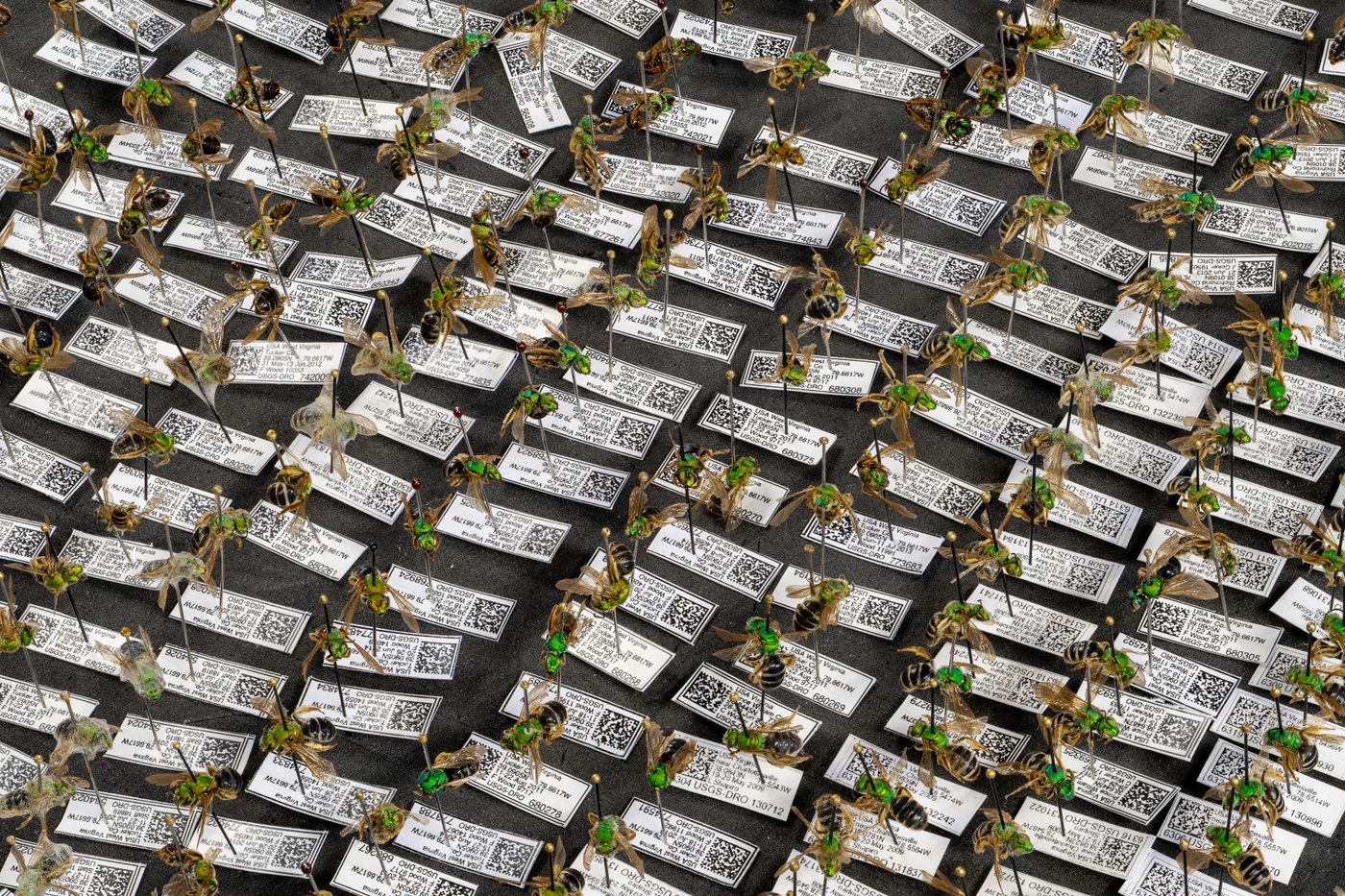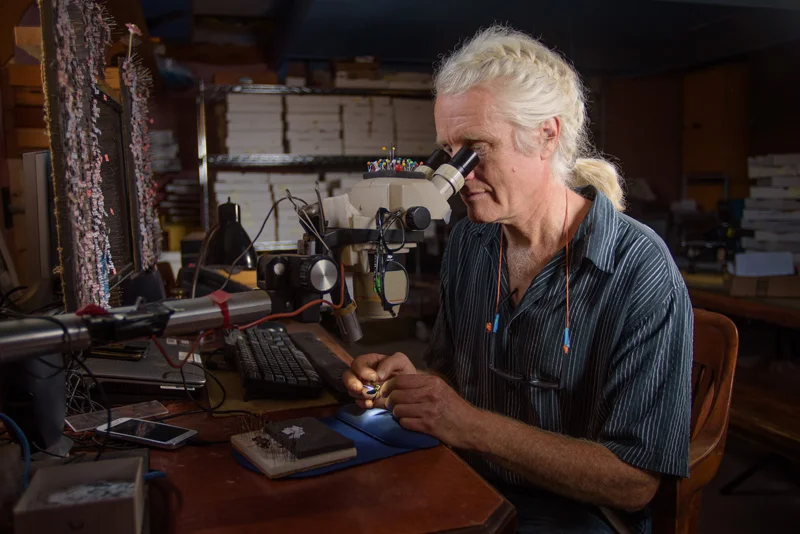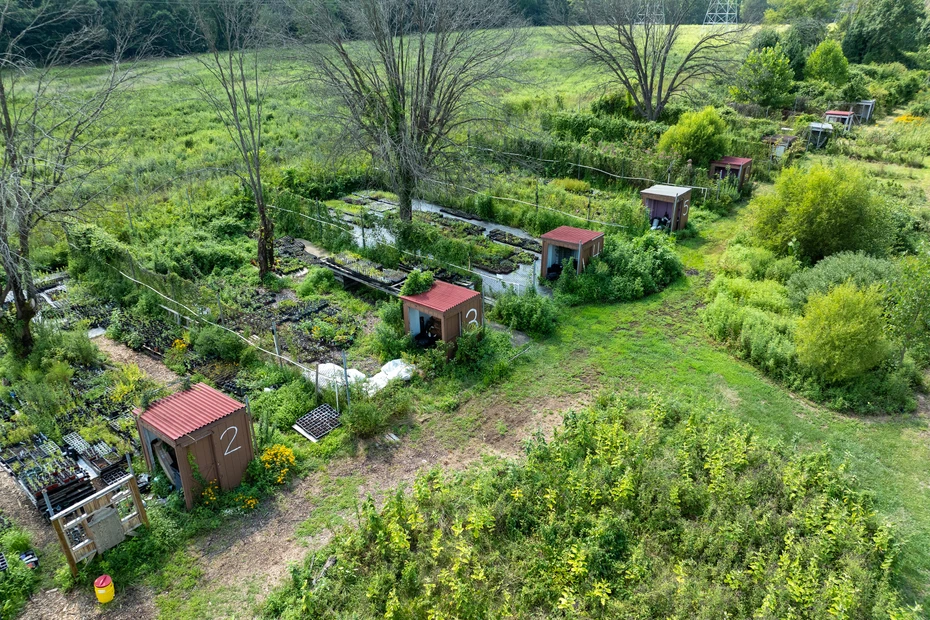🐝 A Silent Collapse: Why We Must Save America’s Native Bee Lab
- kitkat53
- Jun 23
- 2 min read
Something precious is slipping away—and most people don’t even know it.
Tucked into a modest building in Laurel, Maryland, lies one of the most extraordinary collections of native bees on Earth. Run by wildlife biologist Sam Droege, this unassuming federal lab holds over a million bee specimens, meticulously cataloged and photographed. It’s a scientific treasure trove—one that may soon vanish.
Image: Sam Droege at the USGS Native Bee Lab, surrounded by specimen boxes holding irreplaceable records of America’s pollinators.
And now, that lab is on the chopping block.
🌼 Why This Lab Matters
If honeybees are the poster children of pollination, native bees are the essential workforce. With over 4,000 species in North America, they pollinate 80% of all flowering plants, including fruits, vegetables, wildflowers, and nuts.
Sam Droege’s lab is the heart of native bee science in the U.S. His team’s work has:
Discovered new bee species
Mapped population declines across the continent
Created free public access to bee ID guides, images, and data
Informed policy on farming, habitat, and conservation
They’ve done it all on a shoestring budget, in a lab that looks more like a garage than a government facility.
These portraits—each shot with DIY lighting rigs and microscopes—aren’t just beautiful. They are science as art, revealing the intricate, alien beauty of the pollinators we depend on.
⚠️ What’s Happening Now
Due to proposed 2026 federal budget cuts, the USGS Native Bee Lab may be shut down. If this happens:
Research will grind to a halt
The 1M+ specimen archive could be scattered or lost
Critical pollinator tracking data will stop flowing
This isn’t just the loss of a lab. It’s the loss of our ability to understand and protect native bees—and by extension, the plants and animals (including humans) that rely on them.
🌱 What Can We Do?
Let’s turn heartbreak into hope. Here's how:
1. 📣 Spread the Word
Post the Washington Post article and share this story. Help others see what’s at stake.
2. ✍️ Contact Congress
Ask your representatives to protect funding for pollinator research. Mention the USGS Native Bee Inventory & Monitoring Lab by name.
3. 💛 Support with Donations
We’re considering launching a GoFundMe campaign to help preserve the lab's mission. In the meantime, consider donating to:
4. 🌼 Plant for Pollinators
Even a small garden of native wildflowers makes a difference. Create a bee sanctuary on your balcony, in your yard, or in your community.
5. 🐞 Celebrate the Wild
Learn the names of native bees. Share their portraits. Draw them. Make their beauty visible. Sam Droege’s photographs are available in the public domain—use them to teach, inspire, and protect.
These portraits have helped thousands fall in love with pollinators.
✨ Final Thoughts
We may not have the power to stop every budget cut—but we do have the power to rally, to share, to support, and to plant. Let’s honor what Sam Droege and his team have built, and make sure the songs of native bees don’t fade into silence.
Because if we lose the watchers of the bees, we risk losing the bees themselves.
All images courtesy of Sam Droege / USGS Bee Inventory and Monitoring Lab


















